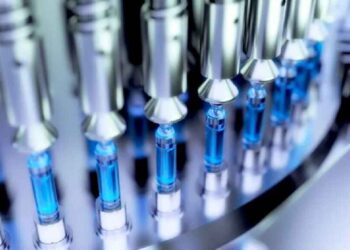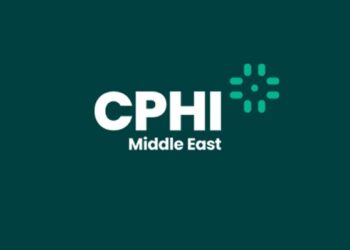A pivotal Phase 3 trial evaluating Dupixent® (dupilumab) to treat moderate-to-severe atopic dermatitis in adolescents (ages 12-17) met its primary and key secondary endpoints.
In the trial, treatment with Dupixent as monotherapy significantly improved measures of overall disease severity, skin clearing, itching, and certain health-related quality of life measures. Dupixent is the first and only biologic to show positive results in this patient population.
“Moderate-to-severe atopic dermatitis can place a particularly significant burden on adolescents, who have to deal with oozing skin lesions with unrelenting, intense itching during their formative years,” said George D. Yancopoulos, M.D., Ph.D., President and Chief Scientific Officer of Regeneron. “Dupixent blocks the IL-4/IL-13 pathway, which is emerging as a central driver of Type 2 allergic inflammation. We are committed to investigating the potential for Dupixent across Type 2 inflammatory diseases with high unmet need including atopic dermatitis, asthma, eosinophilic esophagitis, nasal polyps, chronic obstructive pulmonary disease, and food allergy.”
Patients treated with Dupixent had significant improvement in disease severity at 16 weeks
The primary endpoints were the proportion of patients achieving Investigator’s Global Assessment (IGA) score of 0 (clear) or 1 (almost clear) and 75% improvement in Eczema Area and Severity Index (EASI-75, co-primary endpoint outside of the U.S.) at 16 weeks. Results included:
- 24% of patients who received weight-based dosing of Dupixent every two weeks (200 mg or 300 mg) and 18% of patients who received a fixed dose of Dupixent every four weeks (300 mg) achieved the primary endpoint – clear or almost-clear skin (IGA; score of 0 or 1) – compared with 2% with placebo (p less than 0.0001, and p=0.0007, respectively).
- 41.5% of patients who received Dupixent every two weeks and 38% of patients who received Dupixent every four weeks achieved 75% or greater skin improvement (EASI-75) compared to 8% with placebo (p less than 0.0001).
- There was a 66% improvement in the Dupixent every two weeks group and, 65% improvement in the Dupixent every four weeks group in average percent change from baseline in EASI score compared with a 24% improvement in the placebo group (p less than 0.0001).
- There was a 48% improvement in the Dupixent every two weeks group and 45.5% improvement in the Dupixent every four weeks group in average percent change from baseline in the pruritus numerical rating scale (NRS) compared with a 19% improvement in the placebo group (p less than 0.0001).
“Current treatment options for these adolescent patients such as topical steroids, oral steroids, and non-steroidal immunosuppressants can have significant side effects,” said Elias Zerhouni, M.D., President, Global R&D, Sanofi. “We continue to explore Dupixent’s role in targeting Type 2 inflammation as an underlying cause of atopic dermatitis to potentially provide adolescents, some of whom have lived with this disease their entire lives, a therapy that treats more than just their symptoms.”
Dupixent safety profile was consistent with that seen in adults
For the 16-week treatment period, the overall rate of adverse events was comparable between the Dupixent groups and placebo (72% for Dupixent every two weeks, 64% for Dupixent every four weeks and 69% for placebo). There were no serious adverse events or events leading to treatment discontinuation in either Dupixent treatment group.
Adverse events that were observed at a higher rate with Dupixent included injection site reactions (8.5% for Dupixent every two weeks, 6% for Dupixent every four weeks compared with 3.5% for placebo) and conjunctivitis (10% for Dupixent every two weeks, 11% for Dupixent every four weeks compared with 5% for placebo). Skin infections were numerically lower in the Dupixent groups (11% for Dupixent every two weeks, 13% for Dupixent every four weeks compared with 20% for placebo).
Detailed results from this trial will be presented at a future medical meeting. These data will be submitted to regulatory authorities later this year. In 2016, the U.S. Food and Drug Administration (FDA) granted Breakthrough Therapy designation for Dupixent for the treatment of moderate-to-severe (12 to 17 years of age) and severe (6 months to 11 years of age) atopic dermatitis.
The safety and efficacy of Dupixent in the adolescent atopic dermatitis population have not been fully evaluated by any regulatory authority.
About the Dupixent Trial in Adolescent Patients
The pivotal, Phase 3, randomized, double-blind, placebo-controlled trial evaluated the efficacy and safety of Dupixent monotherapy in adolescent patients with moderate-to-severe atopic dermatitis. The trial enrolled 251 patients who were 12 years to 17 years of age with moderate-to-severe atopic dermatitis whose disease could not be adequately controlled with topical medications or for whom topical treatment was medically inadvisable. In total, 92% of these patients suffered from at least one concurrent allergic condition such as allergic rhinitis, asthma or food allergy.
The primary endpoint of this trial was the proportion of patients with an IGA score of 0 or 1 at Week 16. The IGA is a 5-point scale ranging from 0 (clear) to 4 (severe) that measures overall severity of skin lesions. A co-primary endpoint outside of the U.S. and a key secondary endpoint in the U.S. was the proportion of patients who achieved 75% or greater skin improvement as measured by the EASI-75 at Week 16. EASI is a tool used to measure the extent and severity of the disease.
Patients were randomized into one of three treatment groups for the controlled period of 16 weeks: the first group was treated with Dupixent subcutaneous injection 200 mg or 300 mg every two weeks, based on weight (with an initial dose of 400 mg or 600 mg respectively). The second group was treated with 300 mg Dupixent every four weeks (with an initial dose of 600 mg), and the third group was treated with placebo every two weeks.
About Moderate-to-Severe Atopic Dermatitis
Atopic dermatitis, a form of eczema, is a chronic inflammatory disease with symptoms often appearing as a rash on the skin.[i],[ii],[iii],[iv] Moderate-to-severe atopic dermatitis is characterized by rashes often covering much of the body, and can include intense, persistent itching and skin dryness, cracking, redness, crusting, and oozing.[v] Itch is one of the most burdensome symptoms for patients and can be debilitating.Anchor[vi] In addition, patients with moderate-to-severe atopic dermatitis experience a substantial burden of disease, including painful skin lesions and intense pruritus.vi
Dupilumab Development Program
Sanofi and Regeneron are studying dupilumab in a broad range of clinical development programs for diseases driven by Type 2 inflammation, including asthma (Phase 3), pediatric atopic dermatitis (Phase 3, ages 6 months – 11 years), nasal polyps (Phase 3) and eosinophilic esophagitis (Phase 2). Future trials are planned for chronic obstructive pulmonary disease, grass allergy and food allergy (including peanut). These potential uses are investigational and the safety and efficacy have not been evaluated by any regulatory authority. Dupilumab is being jointly developed by Sanofi and Regeneron under a global collaboration agreement.
For more information on dupilumab clinical trials please visit www.clinicaltrials.gov.
About Dupixent® (dupilumab)
Dupixent is currently approved in the U.S. for the treatment of adults with moderate-to-severe atopic dermatitis whose disease is not adequately controlled with topical prescription therapies, or when those therapies are not advisable. Dupixent is also approved for use in certain patients with moderate-to-severe atopic dermatitis in a number of other countries, including the countries of the European Union, Canada, and Japan. The safety and efficacy of Dupixent in the adolescent atopic dermatitis population have not been fully evaluated by any regulatory authority.
In addition, the potential use of Dupixent for the treatment of certain adults and adolescents with inadequately controlled moderate-to-severe asthma is currently under regulatory review in the U.S. and European Union, and the safety and efficacy for this use have not been fully evaluated by any regulatory authority.



















